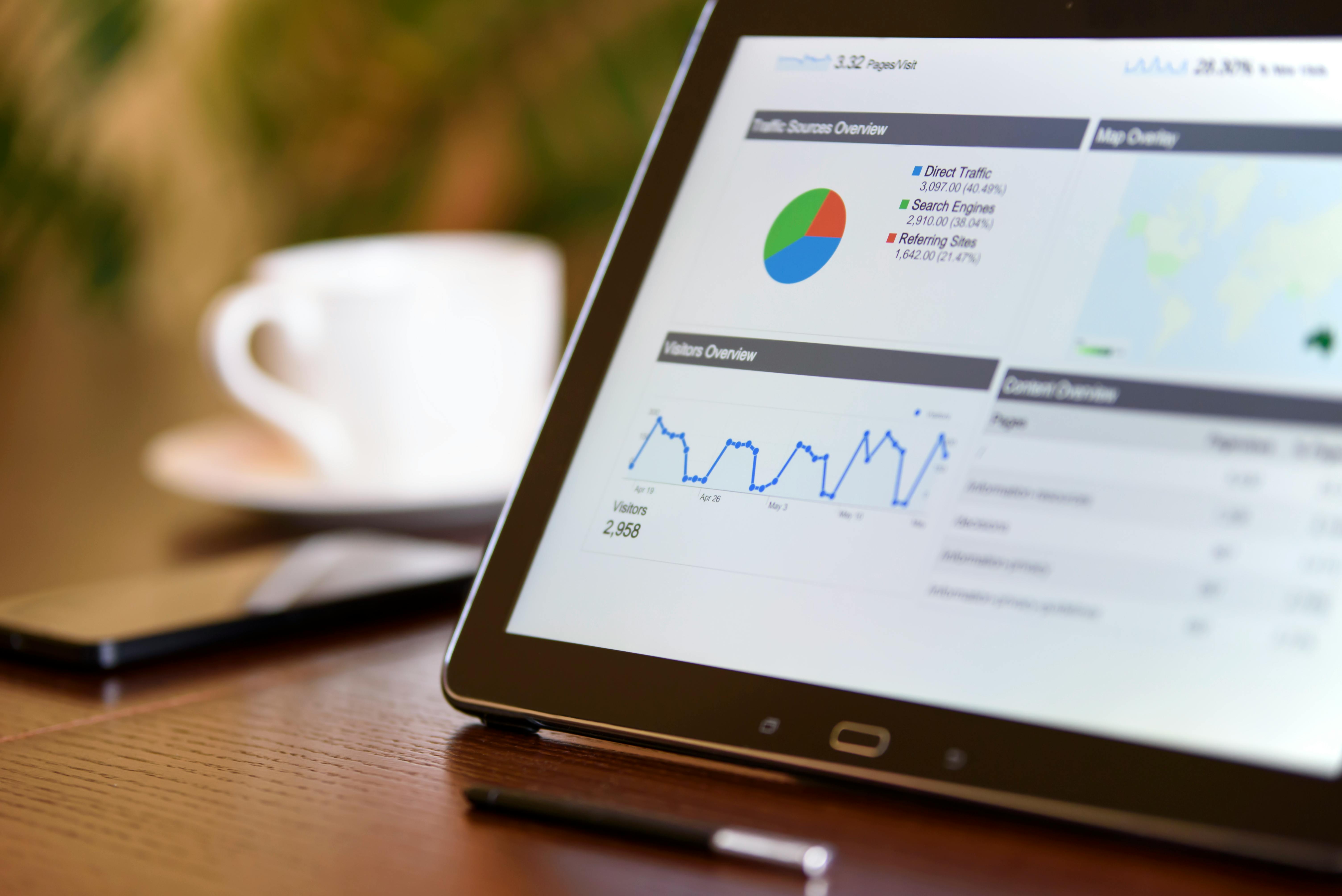
Boost Your Website's Performance with Traffic Bots: Unveiling the Benefits and Pros/Cons
Traffic bots, also known as web traffic generators or website traffic bots, are automated software programs designed to simulate human-like internet traffic on websites. They are created with the purpose of increasing website visibility and making it appear more popular by generating a significant amount of traffic.
These bots emulate human behavior by simulating clicks, page views, and other interactions that a regular user would have on a website. The aim is to trick web analytics tools and website administrators into thinking that the traffic is coming from organic sources, such as genuine visitors.
There are primarily two types of traffic bots: legitimate bots and malicious bots. Legitimate or benign bots are used by search engines like Google to index websites and improve their search rankings. These bots follow established rules and guidelines provided by website owners.
On the other hand, malicious traffic bots engage in unethical or illegal activities. These bots can come from various sources such as hackers, click farms, or unethical advertising agencies. Their purpose can range from artificially inflating advertising metrics, generating fake impressions, or even launching DDoS (Distributed Denial of Service) attacks to disrupt a website.
Traffic bots work by targeting websites through HTTP requests. Through these requests, the bot imitates real users browsing the web and interacting with the site. Bots can be programmed to visit particular pages repeatedly or navigate through a site just like an actual visitor would. This makes it challenging for website administrators to differentiate between genuine and bot-generated traffic unless they employ sophisticated tools or techniques.
To measure the effectiveness of a traffic bot campaign, some key performance indicators (KPIs) are taken into account. These include the number of page views, unique visitors, session duration, bounce rate, conversion rate, and more. However, due to their automated nature, traffic bot visits often exhibit different patterns compared to genuine visitors, leading to low engagement levels and poor conversion rates.
Website owners need to be cautious as excessive usage of traffic bots can harm a website's reputation. Search engines like Google actively discourage the use of traffic bots since it undermines the authenticity and fairness of their search algorithms, which determine the quality and relevance of websites.
In conclusion, while traffic bots may seem like a tempting strategy to boost website visibility and metrics artificially, they come with potential risks and ethical concerns. Most traffic bots are not considered a reliable long-term solution for genuine growth and can have negative repercussions on a website's reputation and online presence.
 Pros and Cons of Using Traffic Bots for Improving Website Metricstraffic bots, automated software designed to generate traffic for websites, garner mixed opinions. Let's explore the pros and cons of implementing traffic bots as a way to boost crucial website metrics.
Pros and Cons of Using Traffic Bots for Improving Website Metricstraffic bots, automated software designed to generate traffic for websites, garner mixed opinions. Let's explore the pros and cons of implementing traffic bots as a way to boost crucial website metrics.Firstly, one advantage lies in the potential improvement of website metrics. By utilizing traffic bots, website owners can elevate their page views and increase their visitor count artificially. This may help showcase higher engagement levels, which in turn can attract genuine visitors and promote organic growth.
Furthermore, efficient use of traffic bots may contribute to enhanced SEO rankings. Increased traffic indicates popularity and relevancy to search engines, influencing them to rank a website higher in search results. Elevated rankings may lead to improved visibility and an amplified chance of reaching the target audience.
Another consideration when employing traffic bots is the potential economic benefit. Generating more web traffic can be advantageous for websites primarily dependent on ad revenue or marketing partnerships. Increased impressions or clicks through these collaborations may result in augmented profits and added incentives for potential advertisers.
However, despite these advantages, there are certain downsides that cannot be overlooked. For instance, utilizing traffic bots can become counterproductive if the generated traffic is irrelevant or of poor quality. Engulfed with fake visits, websites risk deteriorating their user experience. Consumers often prefer authentic engagement and may be discouraged from returning if they discover manipulated numbers.
Moreover, relying heavily on traffic bots raises ethical concerns regarding honest business practices. Misleading representations of website statistics doesn't adhere to transparency standards and can damage a brand's reputation. Building trust with users becomes increasingly challenging when reliance on artificial strategies becomes apparent.
Another aspect to consider is the potential risk of penalties from search engines or ad networks. If fraudulent sources of traffic are detected, websites face significant consequences such as lowered rankings or even complete exclusion from search engine indexes. Ultimately, such penalties can have lasting impacts on a website's credibility and long-term viability.
In conclusion, though implementing traffic bots may temporarily boost website metrics, careful evaluation of their repercussions is vital. While improved statistics and financial gains can present short-term benefits, the longer-term impact on user experience, ethical standards, and credibility should always be monitored closely.
 Can Traffic Bots Positively Influence Your SEO Rankings?traffic bots are tools used to simulate website visits and interaction in order to increase traffic. However, when it comes to their influence on SEO rankings, the effects are debatable. Firstly, traffic bots are often developed to manipulate search engines and create artificially inflated metrics. This can lead to short-term increases in website rankings and organic traffic.
Can Traffic Bots Positively Influence Your SEO Rankings?traffic bots are tools used to simulate website visits and interaction in order to increase traffic. However, when it comes to their influence on SEO rankings, the effects are debatable. Firstly, traffic bots are often developed to manipulate search engines and create artificially inflated metrics. This can lead to short-term increases in website rankings and organic traffic. On the positive side, generating more traffic might make your website appear popular to search engines, potentially leading to higher rankings. Additionally, if your website consistently receives a steady stream of visits, search engines may perceive it as valuable and reputable, therefore improving your SEO rankings.
Nevertheless, there are several risks associated with using traffic bots. Search engine algorithms are constantly evolving and becoming more sophisticated in detecting fraudulent activities. If caught using traffic bots, search engines may penalize your website by lowering its rankings or even removing it from their index.
Furthermore, although traffic bots can increase website visits, they do not guarantee genuine engagement. User behavior metrics such as bounce rate and time spent on page are crucial factors for search engine rankings. Traffic bots generally have a high bounce rate and short visit durations, which can negatively impact these metrics.
Moreover, using traffic bots to generate artificial traffic violates the ethical principles of fair competition. Rather than focusing on improving the actual quality and content of your website, you are artificially inflating metrics, which may ultimately harm user experience and reputation.
In conclusion, while traffic bots may show short-term improvements in SEO rankings by increasing website traffic artificially, the negative consequences can severely outweigh the benefits. It is always best to focus on organic growth strategies that prioritize providing valuable content and ensuring a positive user experience.
 Navigating the Ethical and Legal Implications of Using Traffic BotsNavigating the Ethical and Legal Implications of Using traffic bots
Navigating the Ethical and Legal Implications of Using Traffic BotsNavigating the Ethical and Legal Implications of Using traffic botsUsing traffic bots can be a contentious topic when it comes to ethical and legal considerations. While these tools have their advantages, it is crucial to understand and address the potential ethical and legal implications associated with their use. Here are some key insights to consider:
1. Purpose of Traffic Bots:
Traffic bots are sophisticated software programs designed to generate traffic for websites, blogs, or social media platforms. They are used to artificially increase website traffic, engagement metrics, or click-through rates. This can potentially boost a site's search engine ranking.
2. The Legal Perspective:
The legality surrounding the use of traffic bots varies across jurisdictions. Laws regarding automated tools and bot usage differ, incorporating factors such as intent, privacy concerns, intellectual property issues, fair competition practices, and compliance with advertising regulations.
3. Violation of Terms of Service:
The utilization of traffic bots often contradicts the terms of service of websites or platforms being manipulated. These terms may prohibit anyone from using automated tools or scripts that disrupt the normal functioning of their systems.
4. Copyright Infringement Risks:
Some traffic bots extract content from other websites without permission, which can breach copyright laws. Such practices can result in legal consequences if the bot disregards intellectual property rights.
5. Identification and Liability:
Determining who is accountable when caught employing traffic bots can be challenging. Legally identifying the creators or operators behind such software might be challenging due to anonymous payment methods and distributed infrastructure.
6. Regulatory Compliance:
Advertising rules and regulations set forth by government agencies, like the Federal Trade Commission (FTC) in the United States, oversights deceptive or misleading practices in advertising. These regulations apply to both automated and human-generated traffic activities.
7. Reputation Management:
Using traffic bots might lead to damaged trust among users and stakeholders once detected as an unethical practice. It can significantly harm a website or individual's reputation if associated with deceptive behavior or a violation of the law.
8. Ethical Considerations:
Using traffic bots raises ethical concerns related to fair competition, transparency, credibility, and integrity. Users who manipulate traffic statistics may gain an unfair advantage over others, which is inherently unjust.
9. Negative User Experience:
Traffic bots can significantly impact user experiences since artificially generated traffic often fails to deliver genuine engagement or conversions. Such activities might deceive users and hinder the authenticity and trustworthiness of web platforms.
10. Mitigating Risks and Ensuring Ethical Use:
To navigate the ethical and legal implications surrounding traffic bots effectively, website owners should prioritise transparency, user consent, adherence to terms of service, respect for copyright and intellectual property rights, and compliance with relevant advertising regulations.
In conclusion, while traffic bots may offer enticing possibilities for website growth or commercial gain, it is essential to evaluate the ethical and legal consequences they bring. Striking a balance between utilizing these bot technologies whilst respecting privacy, fairness, and complying with applicable laws is crucial for sustainable web practices and online integrity.
 How to Differentiate Between Good Bots, Bad Bots, and Human TrafficWhen it comes to distinguishing between good bots, bad bots, and human traffic bot in the context of web traffic, there are several aspects that can help in making a differentiation.
How to Differentiate Between Good Bots, Bad Bots, and Human TrafficWhen it comes to distinguishing between good bots, bad bots, and human traffic bot in the context of web traffic, there are several aspects that can help in making a differentiation.Monitoring behavior: One way to discern between good bots, bad bots, and human traffic is by monitoring their behavior patterns. Good bots, like search engine crawlers, typically follow a set of instructions provided by legitimate organizations. They aim to analyze and index websites to enhance search results. On the other hand, bad bots engage in unwanted activities such as scraping content for spamming or carrying out denial-of-service attacks. Human visitors tend to exhibit diverse and interactive behaviors on a website, often showing a mixture of views, clicks, and interactions.
Origin verification: Another method to differentiate between these types of traffic is by examining their origin. Good bots generally originate from reputable organizations and can be identified by their user agents or IP addresses. Search engine bots are commonly associated with renowned search engines. Bad bots, however, may originate from suspicious IP ranges or showcase fake user agents that imitate legitimate ones. Human traffic typically doesn't follow specific patterns regarding origin.
Request pattern analysis: Analyzing the request patterns made by the incoming requests can reveal further differences. Good bots often directly request robots.txt files or follow XML sitemaps provided by the website owners. They tend to make requests more systematically and consistently. Bad bots might exhibit aberrant request patterns such as continuously requesting the same pages repeatedly or ignoring certain rules specified in the robots.txt file. Meanwhile, human users' requests are influenced by their browsing behavior and interests—making them less predictable but more interactive compared to both good and bad bot requests.
Validation through CAPTCHAs and JavaScript challenges: Employing CAPTCHAs or JavaScript challenges on specific website pages allows for further differentiation between good bots, bad bots, and human visitors. Good bots can often bypass such verification mechanisms since they adhere to standard protocols defined by organizations like search engines. In contrast, bad bots might fail these challenges or not even attempt to solve them due to their malicious intentions. Human traffic will generally be able to successfully complete these checks.
Continuous monitoring: Differentiating between good bots, bad bots, and human traffic may require continuous monitoring techniques. Examining traffic data over an extended time period enables the identification of patterns, anomalies, and trends that can aid in determining the underlying nature of different sources of traffic.
In summary, distinguishing between good bots, bad bots, and human traffic involves monitoring behavior, verifying origins, analyzing request patterns, utilizing verification mechanisms like CAPTCHAs or JavaScript challenges, and continuously monitoring traffic data. These approaches can help website owners better understand the sources of their web traffic and take necessary actions to optimize their websites accordingly while protecting against potential threats.
 Boosting Website Performance: Integrating Traffic Bots With AnalyticsBoosting Website Performance: Integrating traffic bots With Analytics
Boosting Website Performance: Integrating Traffic Bots With AnalyticsBoosting Website Performance: Integrating traffic bots With AnalyticsWebsite performance is a crucial factor for any online business or platform. A well-performing website generates higher engagement and leads to improved conversion rates. One method to enhance website performance is by integrating traffic bots with analytics.
Traffic bots, also known as web robots or web spiders, are automated software programs that simulate human web interactions. They help generate artificial traffic to websites, providing realistic user engagement statistics for analysis and improvement. Incorporating traffic bots with analytics tools enables website owners to gather valuable insights, optimize performance, and make data-driven decisions.
Firstly, integrating traffic bots with analytics allows monitoring and measurement of specific metrics. Through these automated bots, website owners can collect data on crucial indicators like page load times, bounce rates, click rates, and user session duration. This real-time information gives a comprehensive overview of how users are interacting with the website and identifies areas needing improvement.
Secondly, the integration helps in detecting and rectifying issues that adversely impact website performance. By continually simulating user interactions from different locations and devices, traffic bots can highlight any potential bottleneck or error on the website. Monitoring different webpages' speed and responsiveness facilitates addressing concerns promptly, which greatly contributes to enhancing the overall user experience.
Moreover, traffic bots integrated with analytics provide an opportunity to conduct A/B testing on the website elements. By emulating human behavior and creating diverse testing scenarios, these bots allow comparison between different website versions or layouts. The data generated from these experiments assists in identifying the most efficient designs leading to higher engagement and conversion rates.
Furthermore, integrating traffic bots with analytics tools helps in tracking bot activity on the website. Web scraping techniques deployed by some malicious bots can skew the results gathered from analytics tools. By using automated bots that mimic normal human behavior alongside strong analytical filters, it becomes possible to differentiate legitimate traffic from unwanted bot visits and accurately measure users' activities.
Lastly, integrating traffic bots with analytics offers the flexibility of setting up custom rules and notifications. With this feature, website owners can define specific thresholds for various performance metrics. Whenever these thresholds are surpassed or diminished, alerts can be automatically triggered, allowing site administrators to take immediate action and resolve any website issues promptly.
In conclusion, integrating traffic bots with analytics is an effective strategy for boosting website performance. It helps in monitoring metrics, detecting issues, conducting A/B testing, tracking bot activity, and providing real-time notification alerts. By mixing traffic bot data with comprehensive analysis, website owners can significantly improve user experience and conversions while making informed decisions regarding optimization efforts.
 Real Case Studies: Success Stories of Websites That Used Traffic Bots WiselyReal Case Studies: Success Stories of Websites That Used traffic bots Wisely
Real Case Studies: Success Stories of Websites That Used Traffic Bots WiselyReal Case Studies: Success Stories of Websites That Used traffic bots WiselyIn the era of digital marketing, website traffic holds immense importance for businesses trying to establish an online presence. While organic and legitimate traffic acquisition are pivotal, some websites have also found success through the strategic use of traffic bots. These automated tools can simulate human interactions, generating artificial traffic aimed at boosting visibility and engagement. Let's delve into some real case studies that shed light on how websites effectively utilized traffic bots to achieve their goals.
1. Triple-X Music: Enhancing Initial Exposure
The music industry is highly competitive, making it difficult for emerging artists to gain initial traction. Triple-X Music, an independent music label, used a traffic bot to increase visibility on various online music platforms. By actively engaging with target demographics, strategically liking, commenting, and sharing valuable content within niche communities, Triple-X was able to garner significant attention in a short period. The increased exposure led to higher streaming numbers, increased social media followers, and ultimately opened doors for collaboration opportunities.
2. Bolt Electronics: Capturing Competitor Market Share
Bolt Electronics resembled several well-established competitors in the consumer electronics market but had struggled to capture significant market share. To level the playing field and generate leads, Bolt Electronics utilized a traffic bot to attract potential customers searching for its competitors' offerings. By opting for an advanced bot that focused on search engine optimization and directed traffic towards specific landing pages with lucrative deals, Bolt Electronics successfully diverted visitors away from their rivals, resulting in increased conversions and boosted revenue.
3. Fitness360: Building Brand Authority
Fitness360 wanted to position itself as an authoritative source of health and fitness information amidst the crowded online wellness industry. By deploying a highly sophisticated chatbot, Fitness360 engaged visitors by offering personalized workout recommendations, diet plans, and insightful articles tailored to their specific goals and inquiries. This interactive experience not only boosted user engagement but also increased return rates. Gradually, Fitness360 became a trusted brand, attracting loyal customers and forging valuable partnerships with related businesses.
4. BookMuse: Revitalizing User Experience
BookMuse, an online bookstore facing declining customer engagement, turned to traffic bots to revamp its website's user experience. By using bots designed to enhance site navigation and recommend personalized book selections, BookMuse transformed the way users discovered and explored its vast collection. As a result, visitors spent more time on the website, leading to an increase in page views and ultimately driving sales growth.
5. TravelBliss: Maximizing Event Attendance
As a travel agency specializing in organizing group adventures and tours, TravelBliss aimed to increase event attendance by showcasing the popularity of their offerings on social media platforms. Using a targeted traffic bot, they auto-completed bookings for lesser-known events with the intentions of sparking interest. By creating the perception of high demand through artificially generated interactions, TravelBliss succeeded in inspiring potential customers to join their trips and activities, boosting their reputation in the adventurous travel community.
In conclusion, when used wisely and strategically, traffic bots can significantly impact a website's success. Real-world case studies like Triple-X Music, Bolt Electronics, Fitness360, BookMuse, and TravelBliss demonstrate that employing traffic bots effectively can enhance visibility, capture market share from competitors, establish brand authority, revitalize user experiences, and maximize event attendance. However, it's vital to strike a balance between leveraging artificial traffic and prioritizing legitimate organic engagement to guarantee sustainable growth and maintain credibility within the online ecosystem.
 Essential Features to Look for in a High-Quality Traffic Bot ServiceWhen searching for a high-quality traffic bot service, there are key essential features to consider. These differentiators can significantly impact​ the performance and effectiveness of the service you choose.
Essential Features to Look for in a High-Quality Traffic Bot ServiceWhen searching for a high-quality traffic bot service, there are key essential features to consider. These differentiators can significantly impact​ the performance and effectiveness of the service you choose.First and foremost, a high-quality traffic bot service should prioritize high-quality traffic sources. The effectiveness of any traffic-generating tool ultimately resides in its ability to attract genuine visitors to your website. Look for services that offer verified traffic sources rather than resorting to suspicious or low-quality traffic providers, as this can result in biased and unproductive visitor numbers.
To ensure seamless integration with your website, compatibility is an intrinsic feature to keep an eye out for. A superior traffic bot service should be compatible with different platforms, such as WordPress, Shopify, or custom-built websites. This compatibility will make setting up the bot and tracking its progress much more straightforward and hassle-free for you.
A crucial aspect to consider is the customization options offered by the traffic bot service. Look for versatility in settings that allow you to tailor the characteristics of the generated traffic to fulfill your specific needs. An ideal service will offer parameters like location targeting, visit duration per visitor, number of pages visited, and much more.
Traffic source diversity is another vital factor. A good traffic bot service should provide access to diverse sources such as search engines, social media platforms, referral websites, and other legitimate sources. This variety mimics organic traffic patterns and helps circumvent any potential suspicion about the visits being generated artificially.
One fundamental requirement is insightful reporting. The capability to track and analyze the generated traffic is crucial in understanding the effectiveness and impact of a traffic bot service on your website's performance. Detailed analytics such as visit duration, bounce rate, pageviews, geolocation data, and referrals enable you to evaluate whether the generated visits align with your intended goals.
Lastly but equally important is user-friendliness. A high-quality traffic bot service should have a user interface that is intuitive and easy to navigate. It should provide clear instructions and be accessible to users seeking methods of driving traffic to their websites, regardless of their technical proficiency. A well-designed UI contributes to a smoother user experience and ultimately saves time spent on unnecessary learning curves.
By considering these essential features when assessing different traffic bot services, you can more effectively identify the most suitable option for your specific needs. Remember that each feature plays a significant role in achieving the desired goal of attracting real and engaging visitors to drive overall growth for your website.
 Reducing Bounce Rate with Smart Traffic Bot StrategiesReducing bounce rate is a crucial aspect of any website's success. When visitors land on your site but quickly leave without exploring further, it increases your bounce rate and signals to search engines that your content might not be relevant. However, with smart traffic bot strategies, you can effectively decrease your bounce rate. Here are some key points to consider:
Reducing Bounce Rate with Smart Traffic Bot StrategiesReducing bounce rate is a crucial aspect of any website's success. When visitors land on your site but quickly leave without exploring further, it increases your bounce rate and signals to search engines that your content might not be relevant. However, with smart traffic bot strategies, you can effectively decrease your bounce rate. Here are some key points to consider:- High-Quality Content: Focus on delivering valuable, well-written, and engaging content that caters to your target audience's interests and needs. By providing informative and interesting articles or resources, visitors are more likely to stay longer on your site.
- User-Friendly Design: Ensure that your website has an intuitive and visually appealing design that facilitates easy navigation. A cluttered or complicated layout can create confusion and lead to a higher bounce rate. Keep the design professional yet inviting.
- Optimize Page Load Time: Slow-loading pages frustrate visitors and prompt them to leave instantly. Optimize your website's speed by compressing images, leveraging browser caching, minimizing HTTP requests, and utilizing a reliable hosting provider to enhance overall performance.
- Responsive Design: Today, browsing through mobile devices accounts for a significant portion of web traffic. Therefore, it's pivotal that your website is fully responsive and mobile-friendly. This way, visitors will have a seamless experience regardless of the device they use.
- Internal Linking: Guide users through your site by implementing internal links that direct them to related articles or pages on your website. By providing relevant suggestions, you increase the chances of visitors clicking and exploring further, effectively reducing bounce rate.
- Well-Structured Pages: Organize your articles or landing pages into digestible sections with clear headings, subheadings, bullet points, and paragraphs. Visually broken down content encourages readers to remain engaged and continue reading.
- Manage Advertisements Thoughtfully: Ads can earn revenue for your site but overdoing them creates annoyance and negatively impacts user experience. Opt for strategic ad placements that do not distract your visitors and, thereby, decrease bounce rate.
- Exclude Irrelevant Keywords: Make sure you are effectively targeting the right keywords according to your content in order to drive traffic that is genuinely interested in what you have to offer. This decreases the chances of irrelevant clicks leading to higher bounce rates.
- Utilize Analytics: Regularly monitor your website's bounce rate using tools like Google Analytics. Analyzing the data can provide insights about any specific pages or content that have higher-than-average bounce rates. You can then optimize these pages by adding more engaging elements or tweaking the elements causing visitors to leave.
In conclusion, implementing these smart traffic bot strategies can help reduce your website's bounce rate significantly. Focusing on valuable content, user-friendly design, optimized page speed, internal linking, and maintaining a mobile-responsive site are all fundamental elements to enhance user experience and keep visitors engaged, resulting in lower bounce rates. Remember, continuous analysis and improvements are essential, so leverage analytics to fine-tune your strategies for optimal results.
 Balancing the Risks: Safeguarding Your Website from Bot Abuse and Penaltiestraffic bots can be a double-edged sword when it comes to the security and well-being of your website. While they can potentially bring more traffic and boost your SEO rankings, they also bear risks of abuse and penalties. Balancing these risks is crucial to protect your website and maintain its integrity. Safeguarding your site from bot abuse requires several proactive measures.
Balancing the Risks: Safeguarding Your Website from Bot Abuse and Penaltiestraffic bots can be a double-edged sword when it comes to the security and well-being of your website. While they can potentially bring more traffic and boost your SEO rankings, they also bear risks of abuse and penalties. Balancing these risks is crucial to protect your website and maintain its integrity. Safeguarding your site from bot abuse requires several proactive measures.Firstly, it's imperative to thoroughly understand the various types of bots and their intentions. Some bots, like search engine crawlers or chatbot services, are helpful and necessary for smooth online operations. However, other bots might have nefarious purposes, such as web scraping, spamming, or launching DDoS attacks. By familiarizing yourself with these bot behaviors, you can better identify potential threats and develop specialized defense mechanisms.
Implementing adequate server protection mechanisms is another vital step. Consider deploying a web application firewall (WAF) that can identify malicious bots' behavior patterns and mitigate potential attacks. Additionally, enforce strict rate limiting and input validation protocols to minimize the impact of bots attempting to overload or exploit your system. Ensuring regular software updates and patches will fortify these preventive measures further.
Authentication mechanisms play an essential role in differentiating human visitors from harmful bots. Implement user registration systems followed by email verification to eliminate suspicious activities of automated scripts. Captchas also prove effective in distinguishing between humans and bots, often requiring users to solve simple puzzles or confirm visual elements to access certain areas of your website. These validation methods make it more challenging for spam or abusive bots to bypass security checkpoints.
Another aspect of protecting your website involves monitoring bot activities and managing their access levels. By implementing logging mechanisms, you can observe patterns in bot activity, such as frequency, timing, or type of requests made. Analyzing this data provides important insights into potential bot abuse trends on your site.
Regularly monitor search engine ranking positions for any suspicious drops or fluctuations in traffic volume resulting from search engine penalties. Search engines employ algorithms that penalize websites engaged in illegitimate practices, such as employing deceptive bots to manipulate search results or generate artificial traffic. Violating search engine guidelines can have damaging consequences, often resulting in decreased visibility or even complete blacklisting.
To stay proactive instead of reactive, educate yourself about current bot-related trends and the strategies hackers use to exploit websites. Stay informed about potential vulnerabilities and constantly update your security protocols to stay ahead of emerging threats.
In conclusion, balancing the risks associated with traffic bots and protecting your website requires proactive measures and continuous efforts. By understanding bot behaviors, implementing strong security measures, utilizing authentication mechanisms, monitoring bot activity, and staying informed on cybersecurity trends, you can effectively safeguard your website from bot abuse while avoiding penalties that could jeopardize its credibility and reputation.
 Enhancing User Engagement Through Sophisticated Bot InteractionsEnhancing User Engagement Through Sophisticated Bot Interactions
Enhancing User Engagement Through Sophisticated Bot InteractionsEnhancing User Engagement Through Sophisticated Bot InteractionsTech advancements have led to the advent of sophisticated bots that can simulate human-like interactions. When it comes to enhancing user engagement, leveraging these advanced bots can open up a realm of possibilities. Here's everything you need to know about using such bots to improve user engagement:
Understanding User Behavior: By incorporating algorithms and machine learning capabilities, sophisticated bots can analyze user behavior patterns. These bots collect data to identify user preferences, interests, and even emotions. This understanding allows for personalized interactions and targeted content delivery.
Natural Language Processing: Advanced bots equipped with natural language processing technologies can comprehend and respond to user queries with accuracy. By simulating human-like conversations, these bots create more engaging and interactive experiences. This technology eliminates cumbersome processes like input forms or dropdown menus, making the bot interaction feel seamless.
Providing Real-Time Assistance: Prompt responses are crucial for user engagement, especially in customer support scenarios. With an advanced traffic bot, you can enable real-time assistance by offering instant solutions or routing users to relevant resources. Real-time communication fosters user satisfaction and involvement, encouraging them to stay longer on your platform.
Interactive Features: Incorporating interactive elements within the bot interactions adds a layer of engagement. For instance, chatbots that provide clickable buttons, emojis, or even GIFs facilitate dynamic conversations. By enabling users to express themselves in different ways, these bots create a more enjoyable and immersive experience.
Personalized Recommendations: Building on the insights gathered through user behavior analysis, advanced traffic bots can deliver tailored recommendations. Whether recommendations for products, services, or content, personalization based on individual preferences enhances user engagement by presenting highly relevant options.
Multiple Communication Channels: To captivate a wide audience and cater to individual preferences, ensuring your bot functions across various communication channels is critical. These can include website integration, messaging platforms like Facebook Messenger or WhatsApp, and even voice-controlled devices like smart speakers.
Collecting Feedback: Real-time bot interactions also offer the opportunity to collect feedback from users. Incorporating surveys or feedback prompts at the end of each interaction helps policymakers gauge user satisfaction, while enabling users to feel involved in shaping the platform they engage with.
Seamless Human Handover: Although bots can provide valuable assistance, sometimes users prefer human interaction. Empowering your bot with an efficient handover mechanism ensures a seamless transition to a human representative when required. This flexibility strengthens user engagement by acknowledging their preferences and granting them the personal touch they desire.
Continuous Improvement: To continually enhance user engagement, it is crucial to constantly optimize and improve your traffic bot. By regularly analyzing user feedback, monitoring bot performance, and leveraging AI technologies, you can keep refining the bot's capabilities to better meet user expectations.
In summary, leveraging sophisticated bots for enhancing user engagement opens up exciting possibilities. By leveraging technologies like natural language processing, personalized recommendations, interactive features, and seamless handovers, you can foster a more engaging and satisfying user experience. Remember to continuously improve the bot based on user feedback and market trends to stay ahead in the ever-evolving digital landscape.
 From Views to Conversions: Maximizing the Commercial Benefits of Traffic Botstraffic bots have emerged as powerful tools in every digital marketer's arsenal. These automated programs simulate human behavior, visiting websites and generating traffic. While initially designed for legitimate purposes such as website analysis or monitoring, their misuse quickly caught on, resulting in a less savoury side of their usage related to spamming and fake traffic generation.
From Views to Conversions: Maximizing the Commercial Benefits of Traffic Botstraffic bots have emerged as powerful tools in every digital marketer's arsenal. These automated programs simulate human behavior, visiting websites and generating traffic. While initially designed for legitimate purposes such as website analysis or monitoring, their misuse quickly caught on, resulting in a less savoury side of their usage related to spamming and fake traffic generation.When used conscientiously, traffic bots can offer several advantages for businesses looking to expand their online presence and boost conversions. The key lies in maximizing the commercial benefits that traffic bots can bring. Let's delve into some ways this can be achieved.
1. Enhanced Website Analytics: By deploying traffic bots, you can analyze how users interact with your website in real-time. These tools are capable of capturing valuable user behavior data, providing insights into user preferences on specific pages, time spent on different sections, and even the conversion funnel specifics. With accurate and up-to-date statistics, businesses can make well-informed decisions to optimize their platforms effectively.
2. Improved Conversion Rates: Traffic bots increase the volume of visitors to your website or landing pages. This influx can potentially lead to higher conversion rates, as there is a greater chance of engaging with individuals interested in your offerings. However, it is important to balance the quantity with quality to ensure that targeted traffic is ultimately resulting in meaningful conversions.
3. Testing and Optimization: Traffic bots help marketers run A/B tests quickly and efficiently to assess different variations of their webpages or marketing campaigns. This enables them to identify and fine-tune strategies that maximize conversions, as they can gather real-time data on how small changes affect user behavior.
4. SEO Boost: Typically, more organic traffic translates into higher search engine rankings. Increased traffic due to bots can help improve your website's visibility and raise its profile in search engines such as Google, ultimately attracting more organic visitors.
5. Performance Testing: Websites sometimes fail when experiencing high volumes of concurrent users. Through stress tests that simulate large volumes of traffic, traffic bots enable companies to determine the maximum capacity their platforms can handle. Addressing these limitations in advance can lead to better user experiences during peak periods and help prevent site crashes or slow loading times affecting conversions.
6. Competition Analysis: Traffic bots are useful for detecting competition strategies and tactics. By identifying their competitor's activities (such as ad campaigns, promotions, and landing pages), businesses gain valuable insights that can be leveraged to refine their own marketing efforts.
It is essential, however, to approach traffic bot usage ethically and with responsible intentions. Practices such as click fraud or spamming dilute the integrity of online marketing and can harm both businesses and users.
In conclusion, when deployed thoughtfully, traffic bots can positively impact a business's commercial goals. By providing improved analytics, boosting conversion rates, aiding in testing and optimization, improving SEO rankings, facilitating performance testing, and assisting in competition analysis, these tools offer immense potential for maximizing the benefits of online traffic towards driving higher sales and revenue.
 The Future of Digital Marketing: AI-Powered Bots as Traffic EnhancersThe future of digital marketing seems immensely promising, and one area that has garnered significant attention is the rise of AI-powered traffic bots. These intelligent bots have the potential to revolutionize the way businesses drive traffic to their websites and engage with their target audience.
The Future of Digital Marketing: AI-Powered Bots as Traffic EnhancersThe future of digital marketing seems immensely promising, and one area that has garnered significant attention is the rise of AI-powered traffic bots. These intelligent bots have the potential to revolutionize the way businesses drive traffic to their websites and engage with their target audience.AI-powered traffic bots leverage the capabilities of artificial intelligence and machine learning algorithms to streamline and optimize marketing efforts. Unlike traditional methods of generating traffic through manual efforts or paid advertisements, these bots bring a level of efficiency, accuracy, and automation that has never been witnessed before.
By employing AI-powered bots, businesses can optimize their ad campaigns based on real-time data analysis and consumer behavior patterns. These bots not only help in identifying the right target audience but also in tailoring personalized content for them, resulting in highly focused and effective marketing strategies.
One major advantage of using AI-powered bots for traffic enhancement is increased engagement and lead generation. These bots can analyze user interaction, preferences, and browsing history, enabling businesses to deliver tailor-made content and personalized offers to potential customers. By doing so, brands can establish a more reliable and engaging connection with the users, leading to higher conversion rates.
Another intriguing prospect these bots offer is their ability to automate customer service and support. With sophisticated natural language processing algorithms, they can effortlessly engage with users through chat interfaces and provide quick responses to queries or concerns. By implementing such automated support systems, businesses can enhance user experience without requiring significant human resources.
Furthermore, AI-powered bots are poised to revolutionize SEO practices. Search engine algorithms are evolving constantly, making it difficult for businesses to keep up with the rapidly changing landscape. However, smart bots armed with deep learning capabilities can adapt quickly to new search engine ranking criteria by understanding latent semantic indexing, analyzing page authority metrics, or studying search patterns. Such agility not only ensures better website rankings but also improves overall organic traffic generation.
In summary, the future of digital marketing lies in harnessing the power of AI-powered traffic bots. These bots offer unparalleled potential for enhancing website traffic, engagement, lead generation, and overall customer experience. By tapping into artificial intelligence and machine learning technologies, businesses can stay ahead of the competition and deliver more powerful and effective marketing campaigns.
 Setting Realistic Expectations: What Traffic Bots Can and Cannot Do for Your WebsiteSetting Realistic Expectations: What traffic bots Can and Cannot Do for Your Website
Setting Realistic Expectations: What Traffic Bots Can and Cannot Do for Your WebsiteSetting Realistic Expectations: What traffic bots Can and Cannot Do for Your WebsiteWhen it comes to driving traffic to your website, there are various methods and tools available. One such tool that has gained popularity is traffic bots. These software programs are designed to simulate human traffic and bring visitors to your website. However, it is essential to set realistic expectations about what these traffic bots can do for your site.
First and foremost, it's important to understand that traffic bots are not a magic solution that will instantly skyrocket your website's popularity or convert visitors into loyal customers. While they might generate increased traffic numbers, the quality of that traffic might be questionable. Traffic bots cannot guarantee genuine engagement, conversion rates, or sustainable growth for your online presence.
One significant advantage of utilizing a traffic bot is the potential to increase your website's overall visibility. By directing more visitors towards your site, you may trigger search engine algorithms and make your website appear more relevant and authoritative. However, it is crucial to recognize that search engines continuously refine their algorithms to identify and penalize artificially generated or low-quality traffic. Relying solely on traffic bots without considering other aspects of SEO and content strategies may result in penalties, decreased rankings, or even complete delisting from search engine results.
Traffic bots also cannot replicate the user experience provided by human visitors. Genuine users interact with a website based on their preferences, intentions, or interests. They might leave comments, subscribe to newsletters, make purchases, or provide valuable feedback. Traffic bots lack the ability to engage authentically like human visitors do. This makes it vital not to solely rely on traffic stats generated by bots when evaluating the real impact of your site on its target audience.
Another critical aspect to consider is the source of the traffic generated by these bots. In many cases, traffic bots obtain visits by repeatedly loading pages or visiting websites that host these services themselves. This type of generated traffic might lead to inaccurate analytics data, distorting your understanding of audience behavior, as well as the performance metrics of your site. Traffic bots rarely offer a detailed breakdown of their traffic generation methods, making it challenging to distinguish real user engagement from artificial sources.
While traffic bots might offer a quick and easy solution to boost your website's traffic numbers, they should not be seen as a substitute for meaningful human interaction, quality content, and robust SEO practices. To effectively drive sustainable growth for your website, it is crucial to focus on creating engaging and valuable content that resonates with your target audience. Strive to build organic traffic through search engine optimization and effective marketing strategies instead of relying solely on traffic bots.
In summary, traffic bots can provide a temporary increase in website traffic but should be utilized with caution. Avoid setting unrealistic expectations and prioritize developing genuine human engagement. Remember that set-and-forget solutions rarely deliver long-term results. Ultimately, it's essential to focus on building a thriving online presence by providing value to real visitors while adhering to ethical digital practices.

